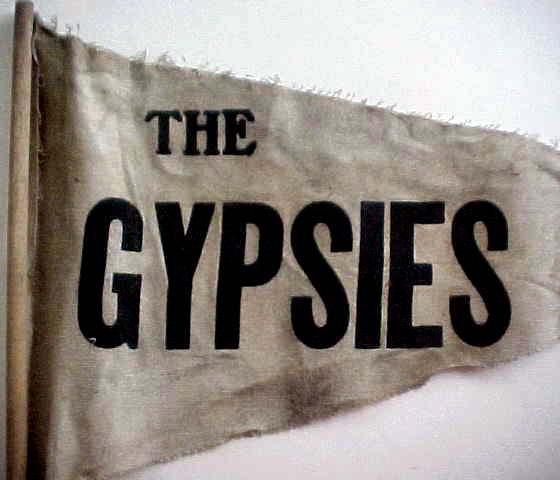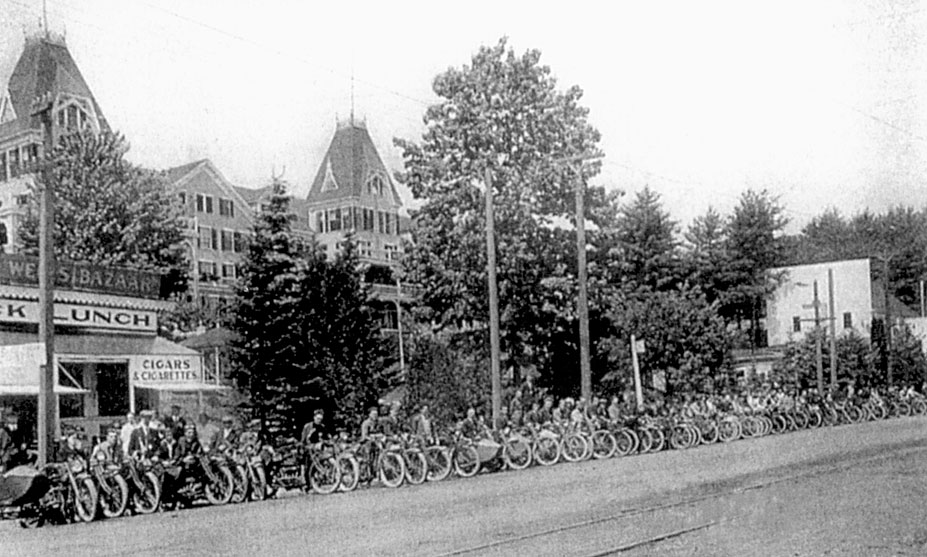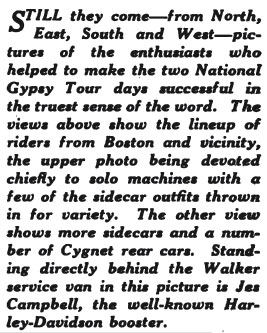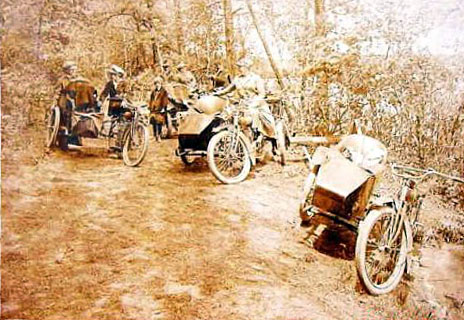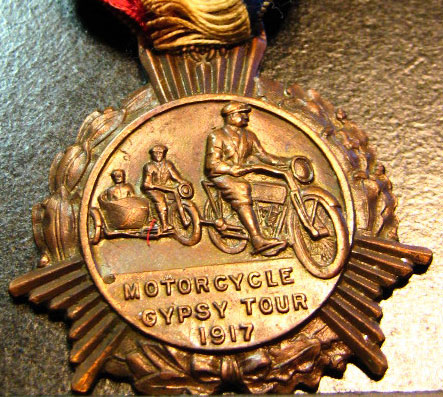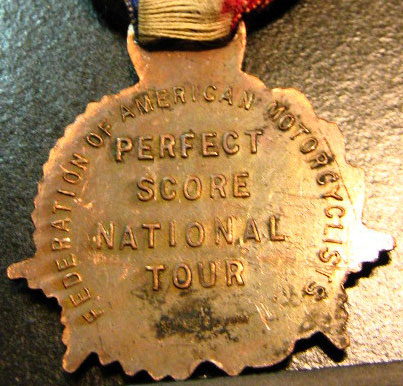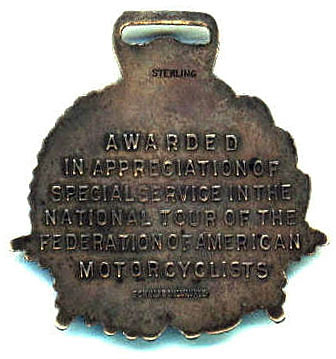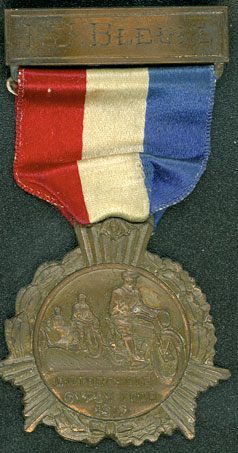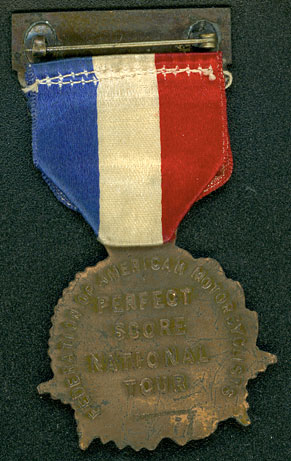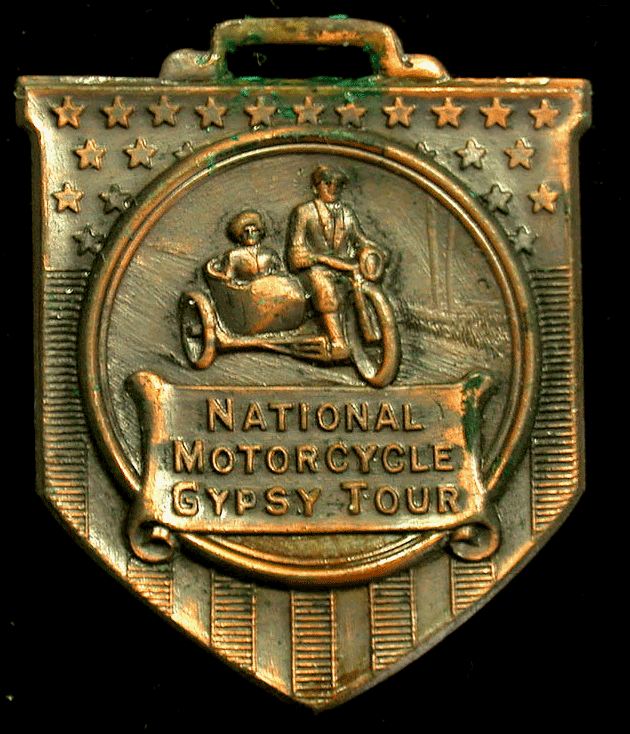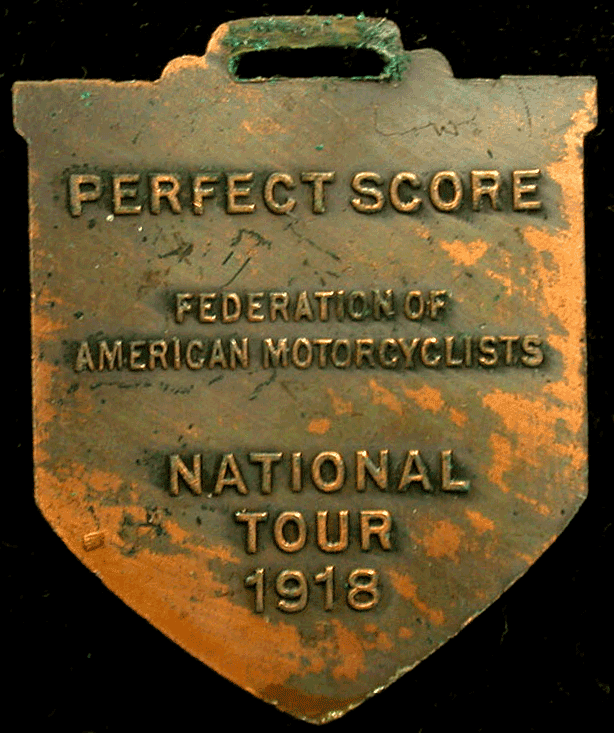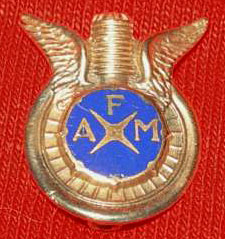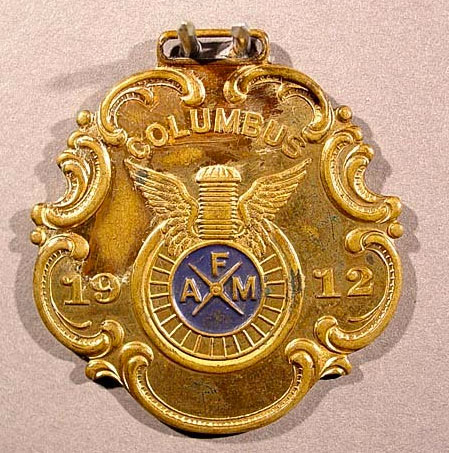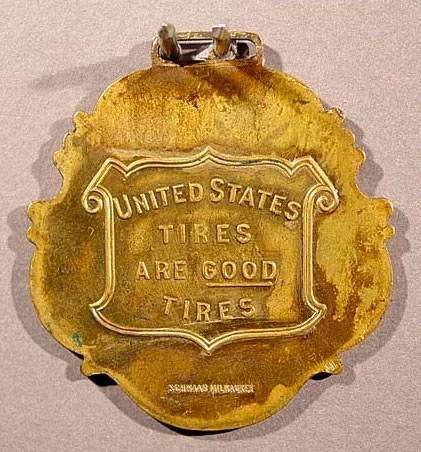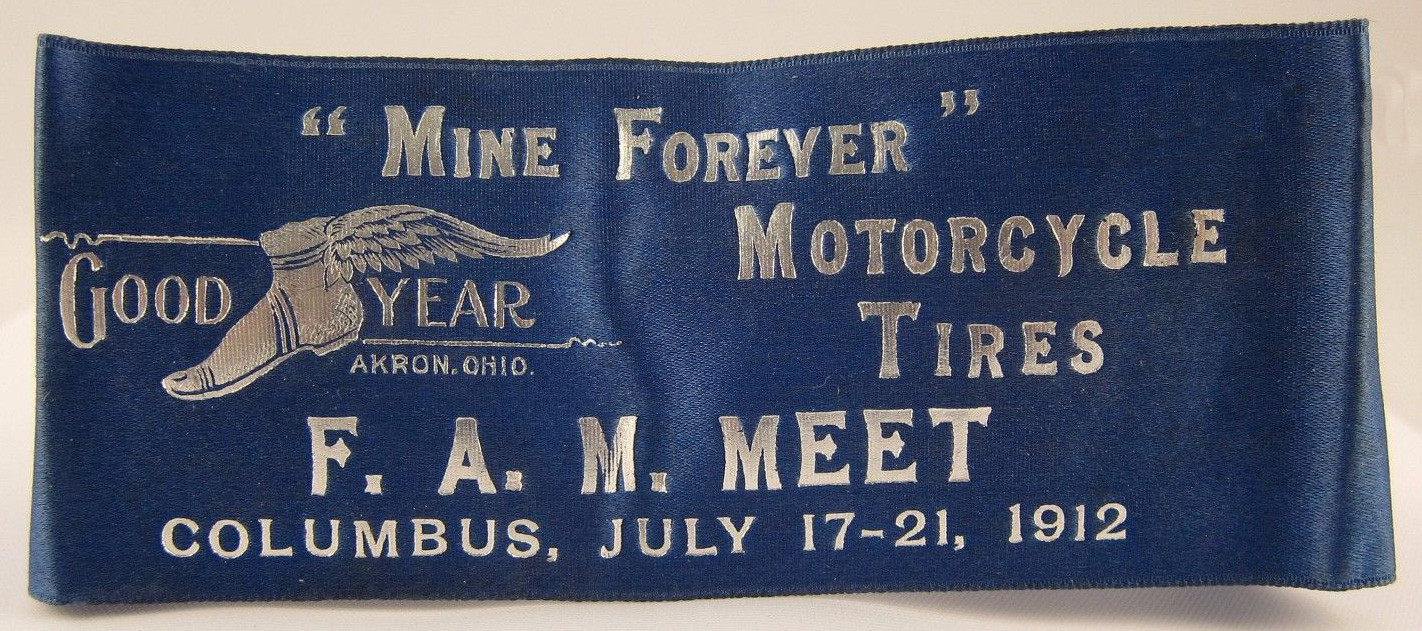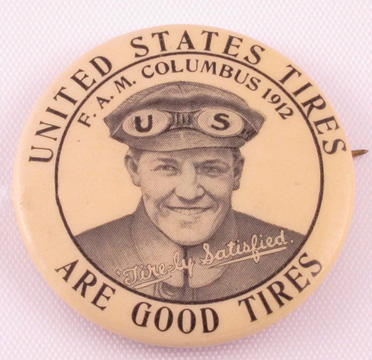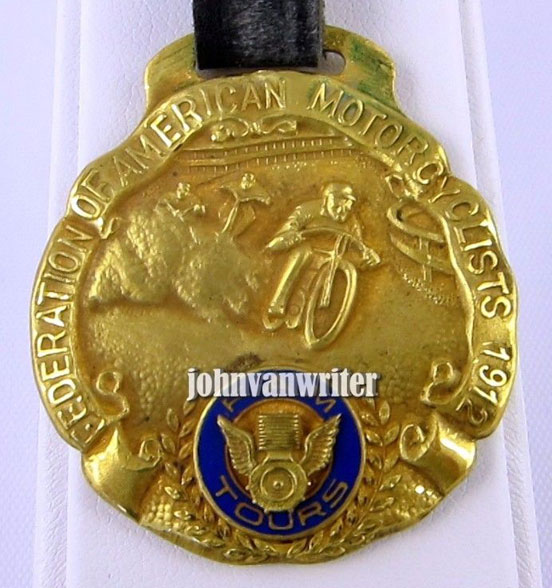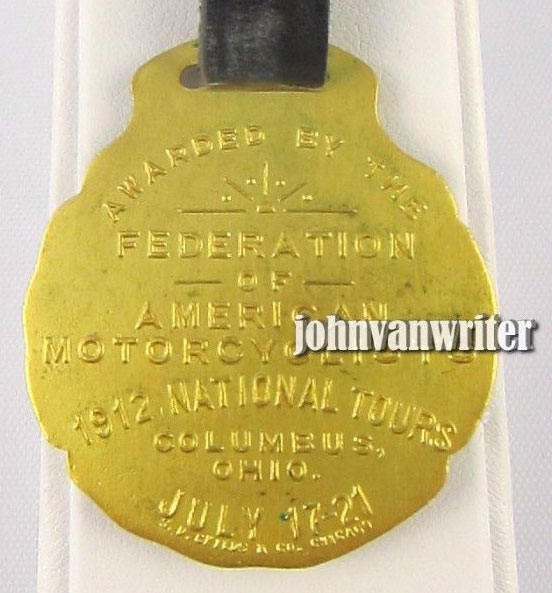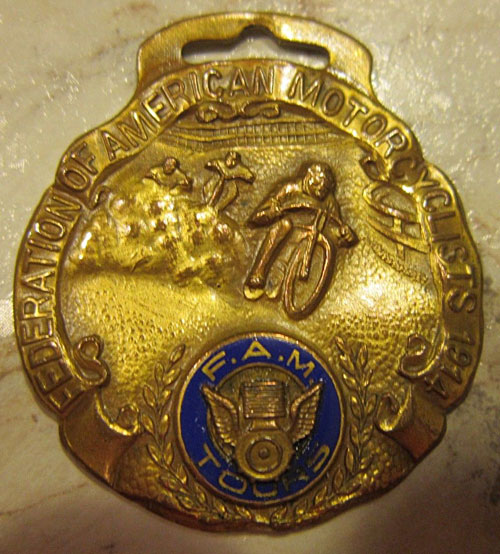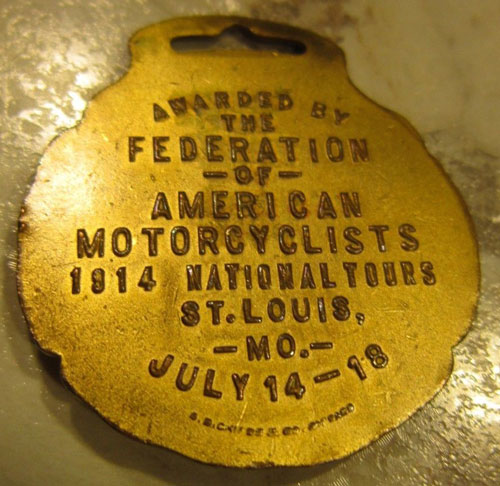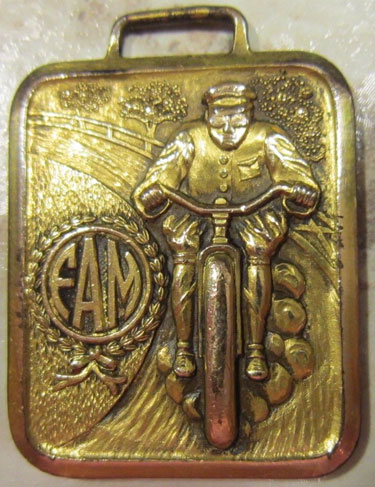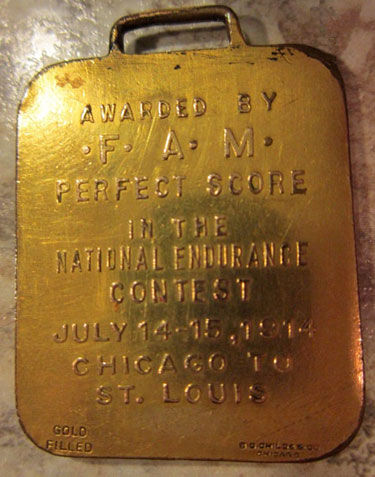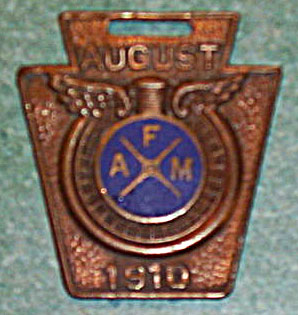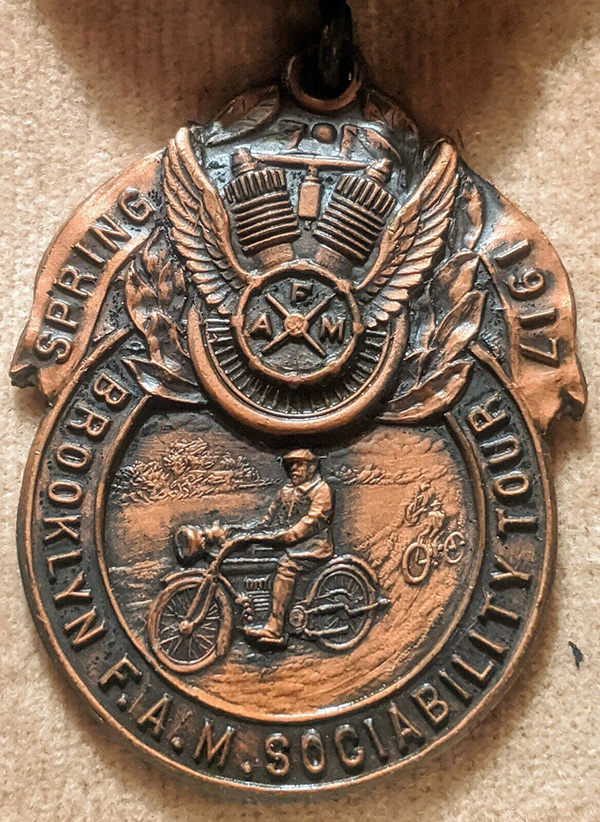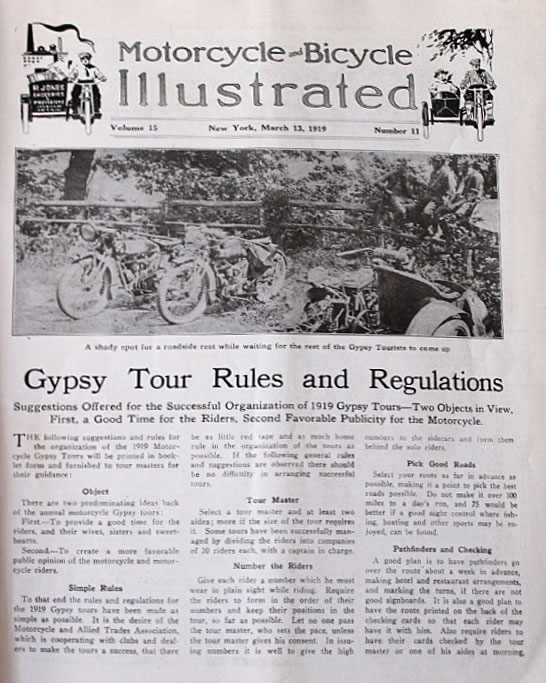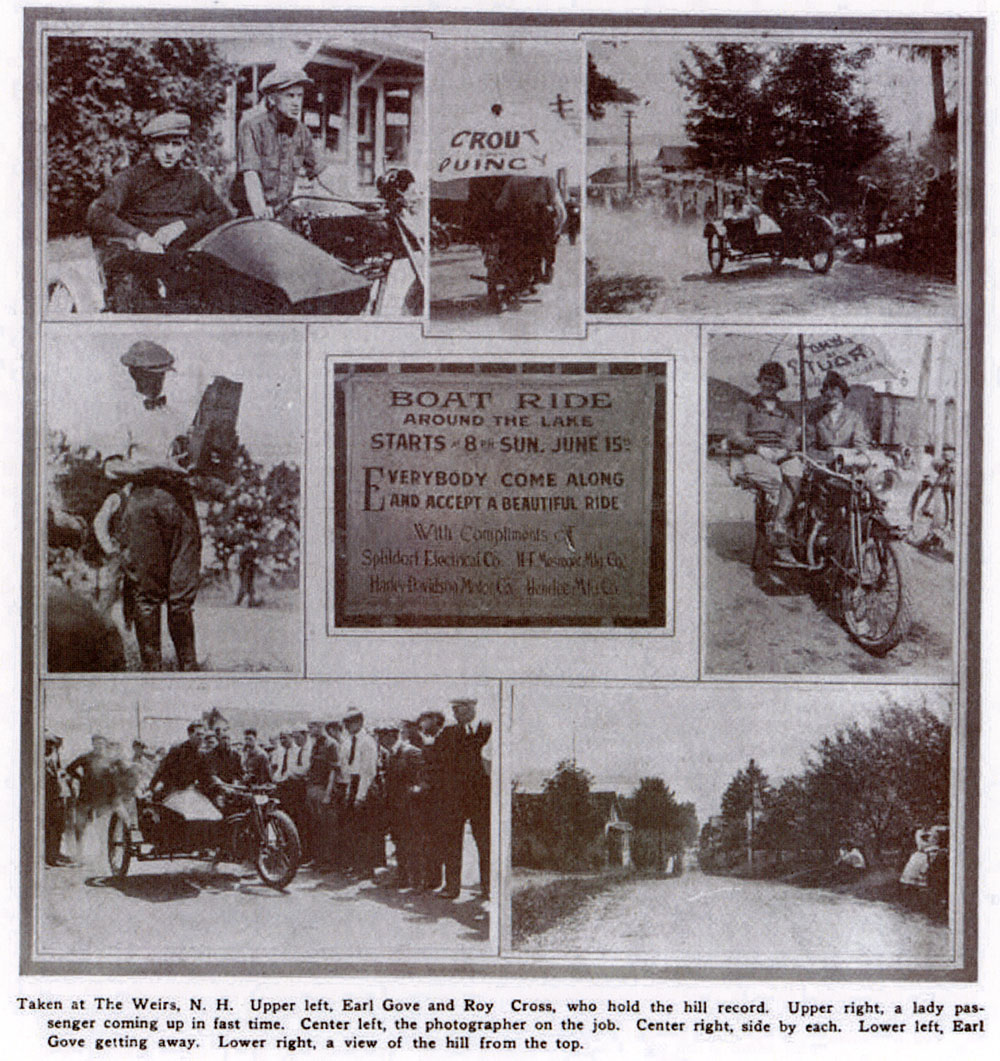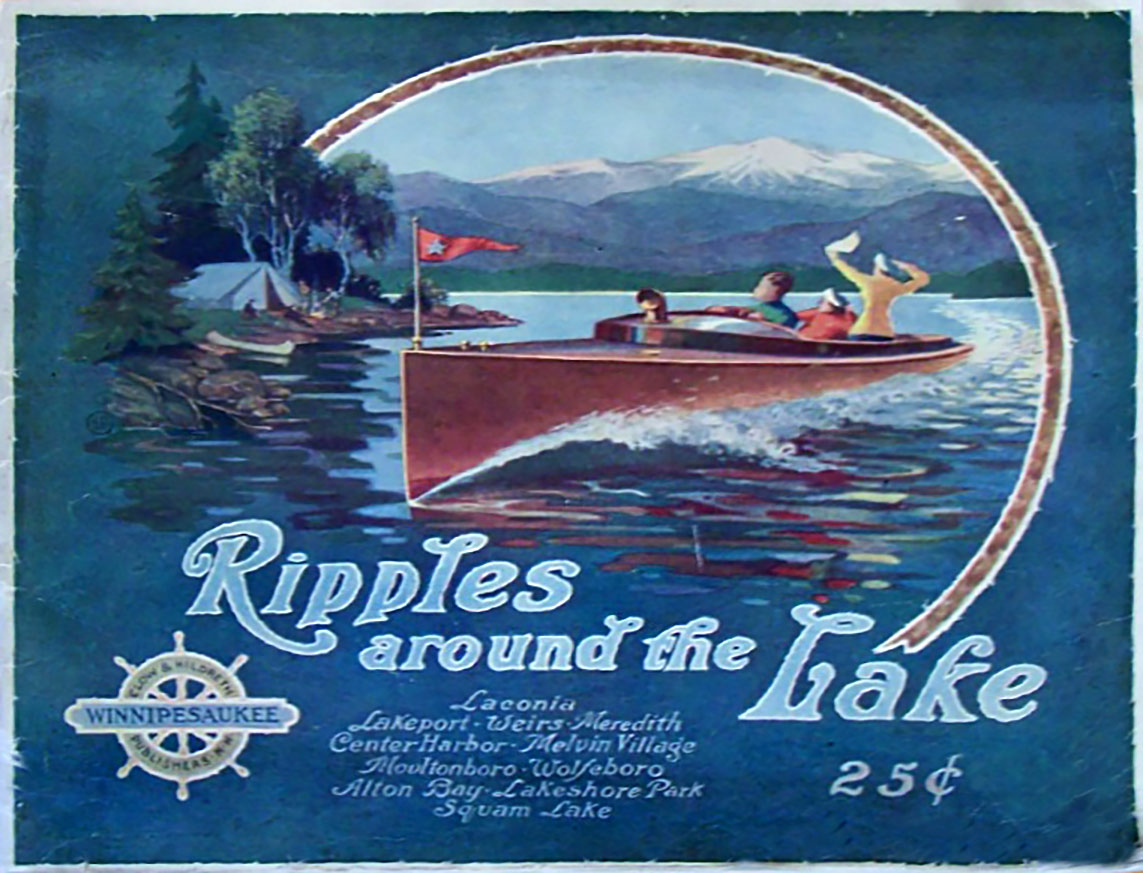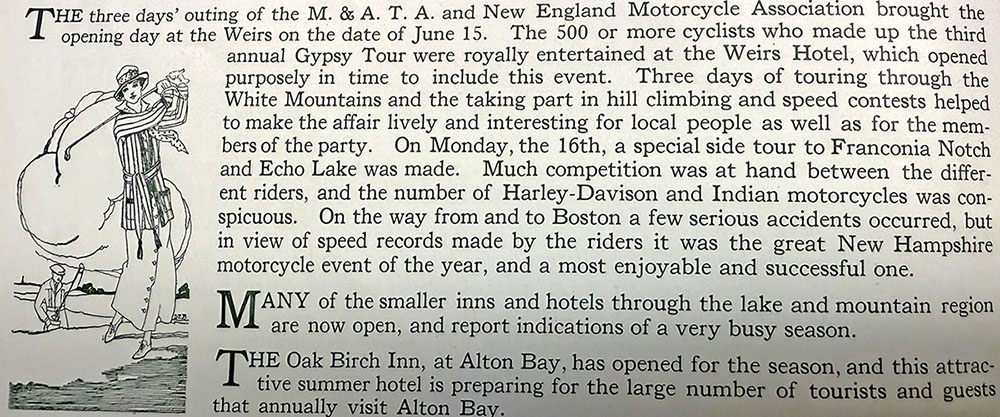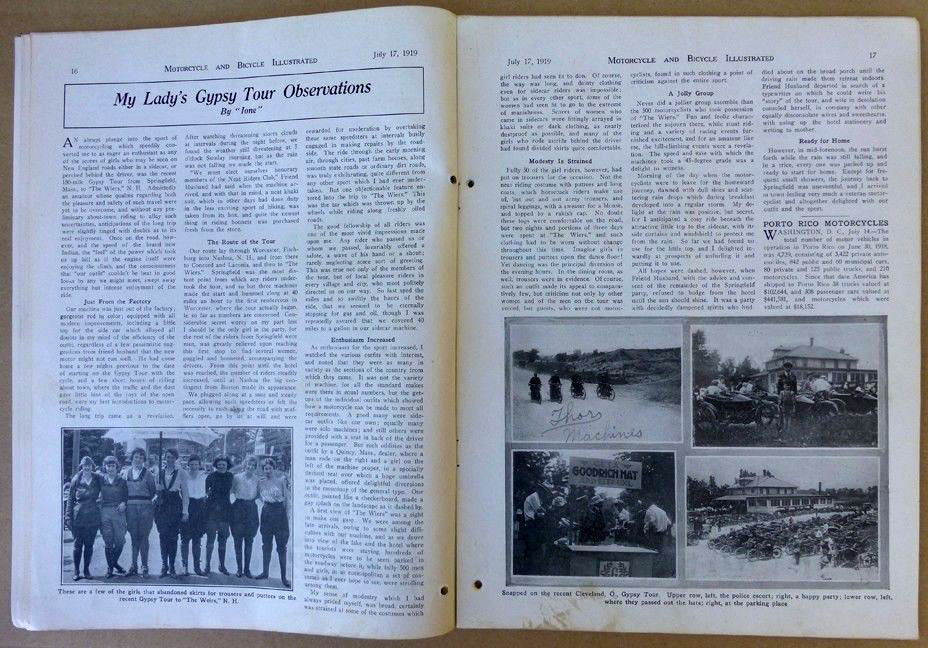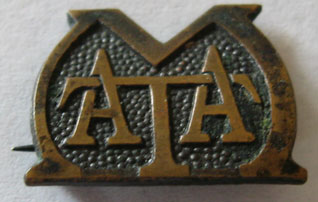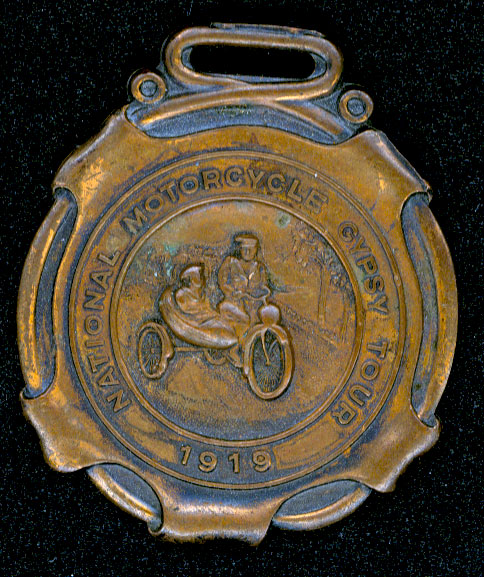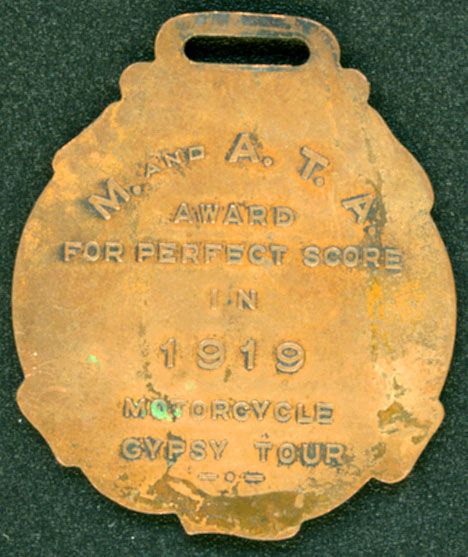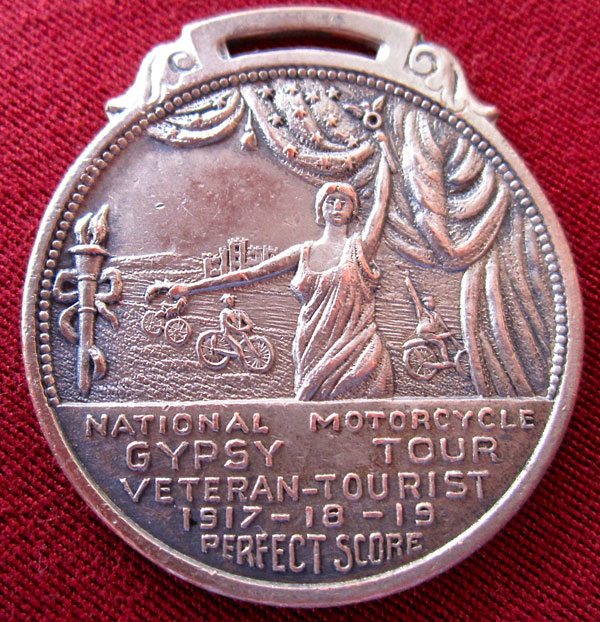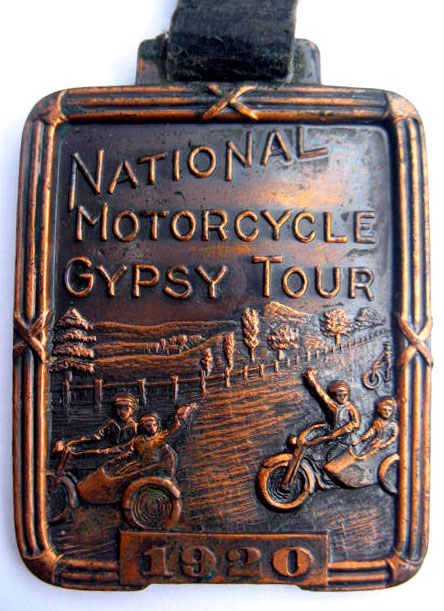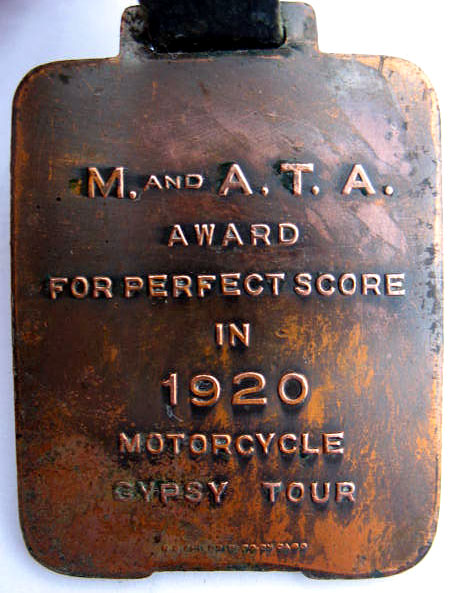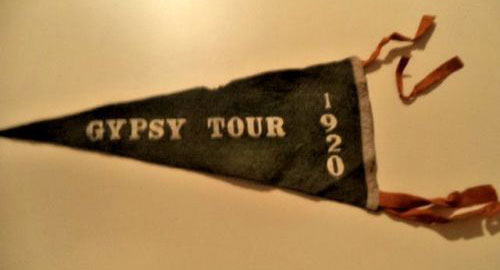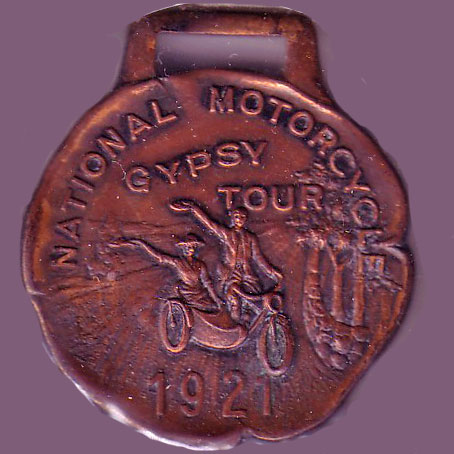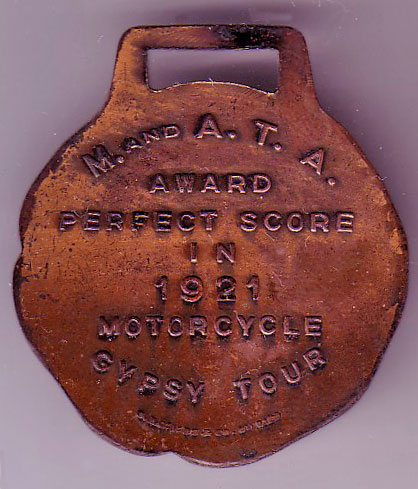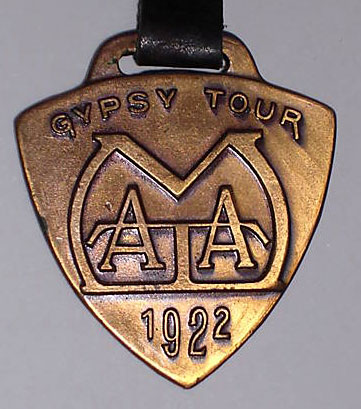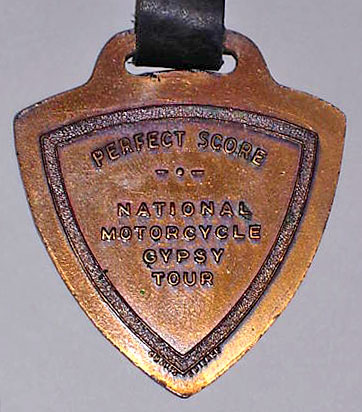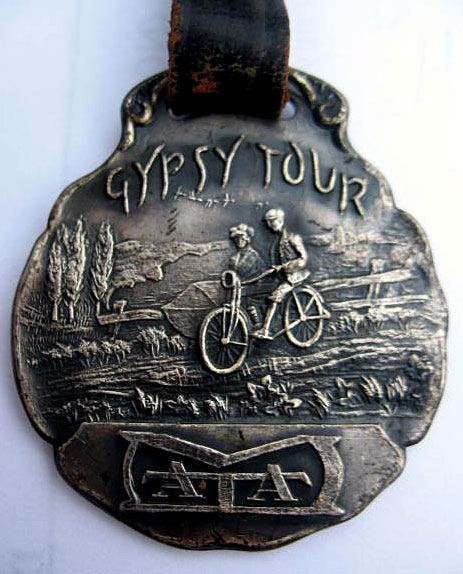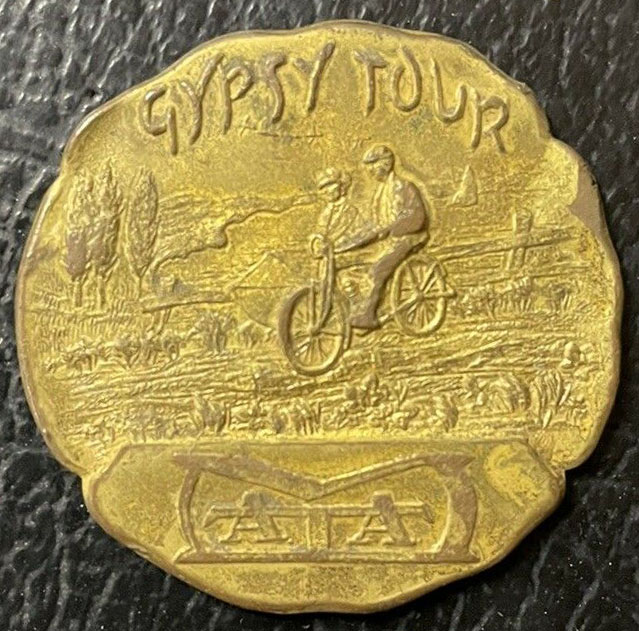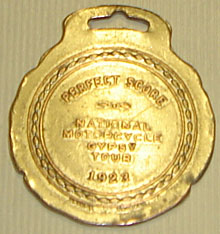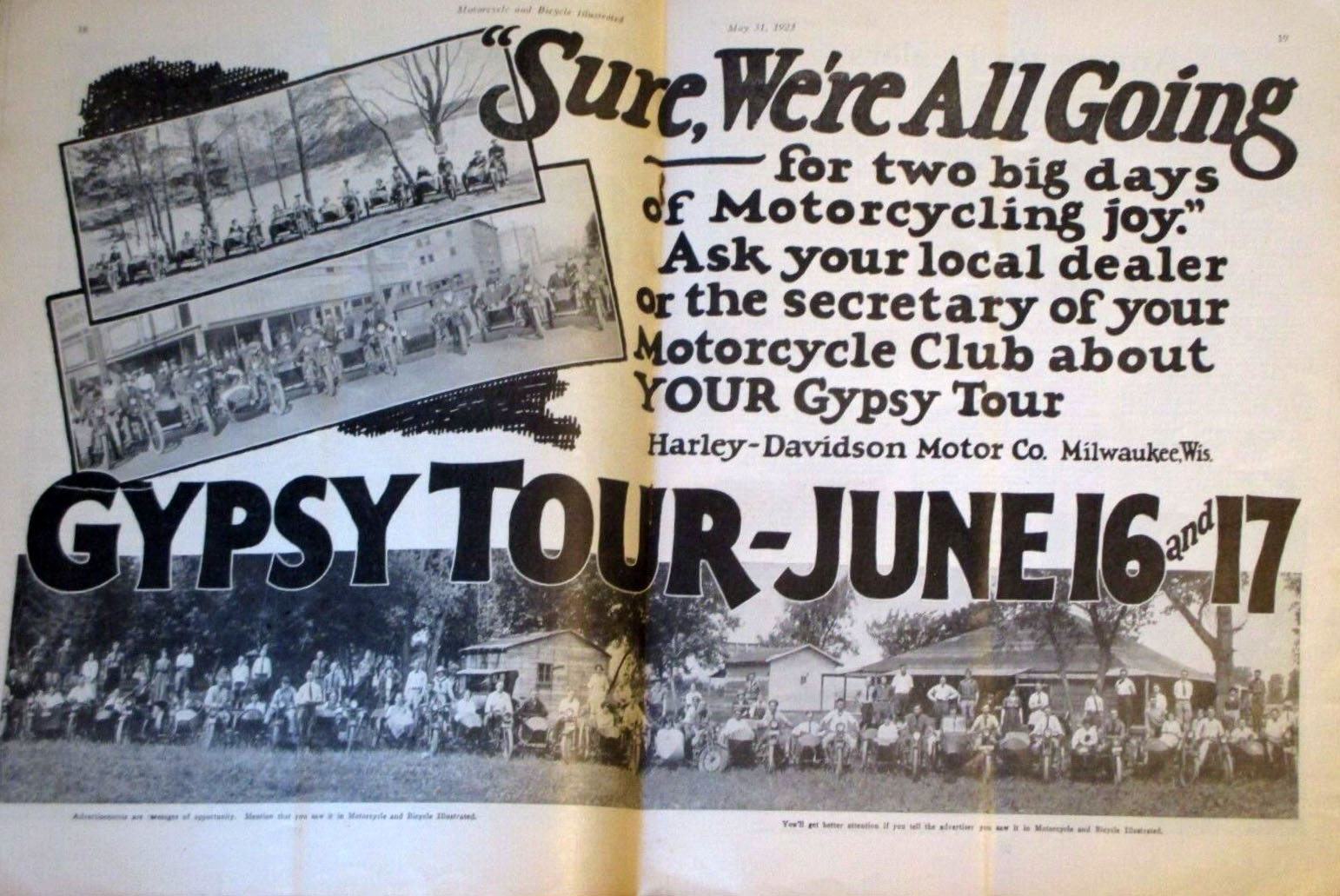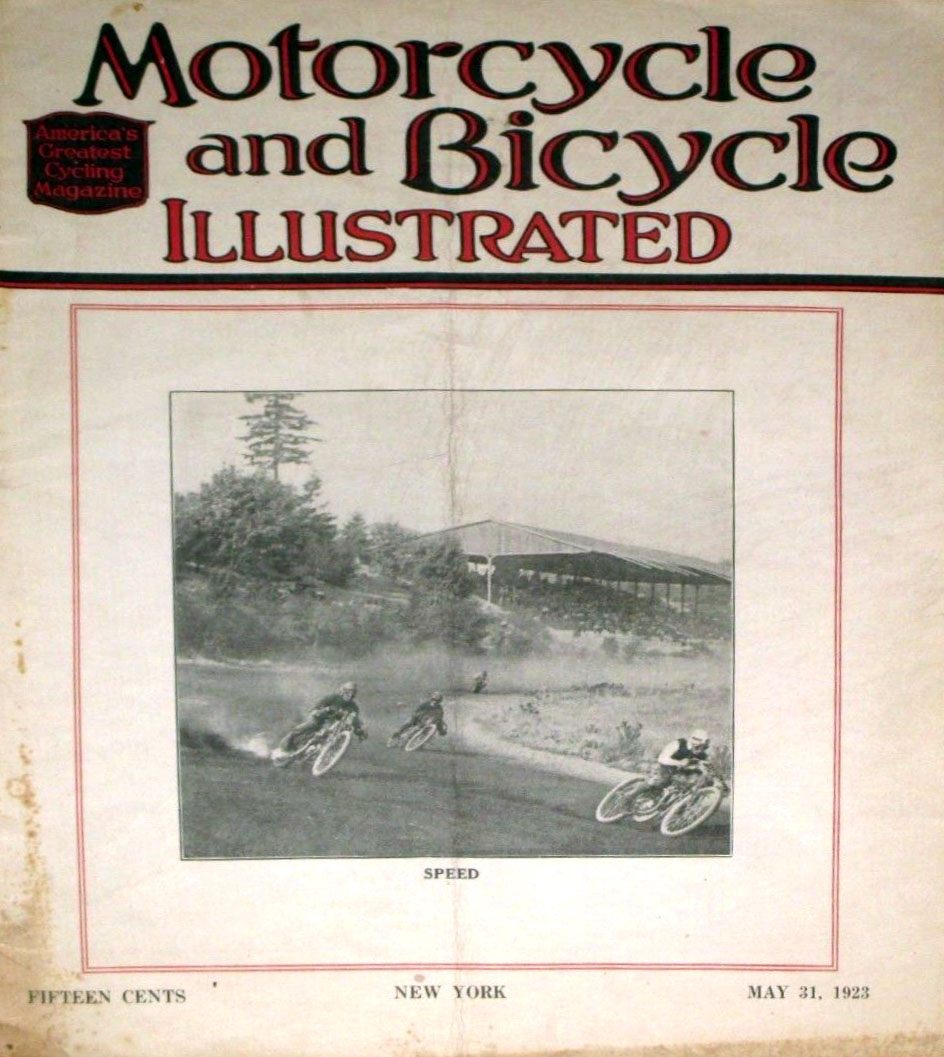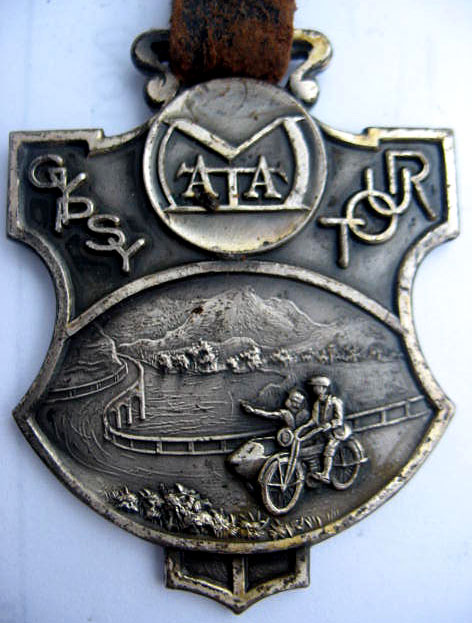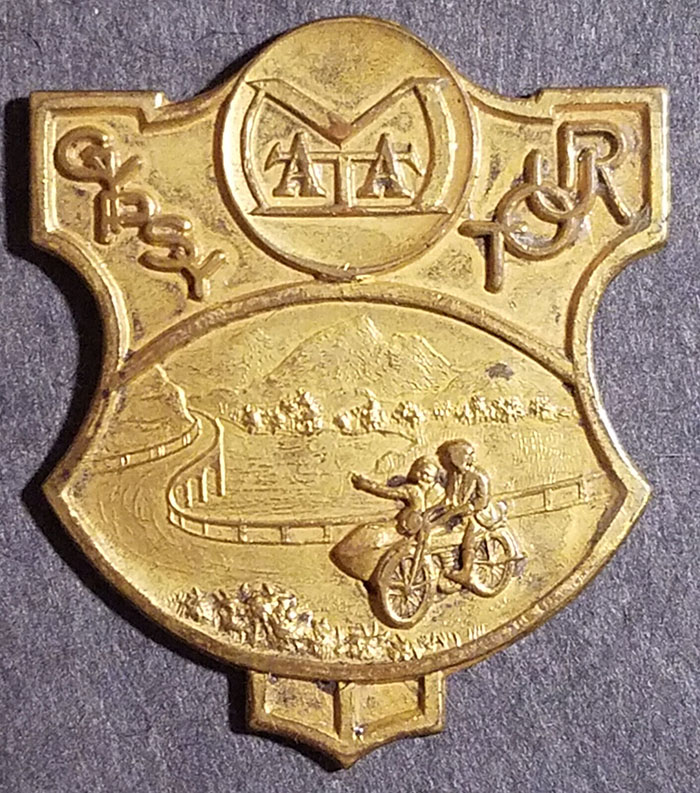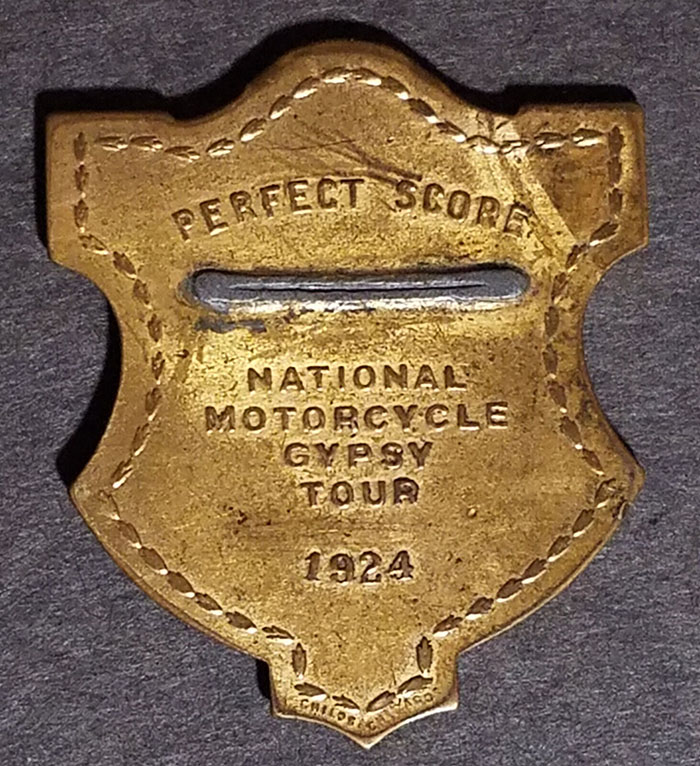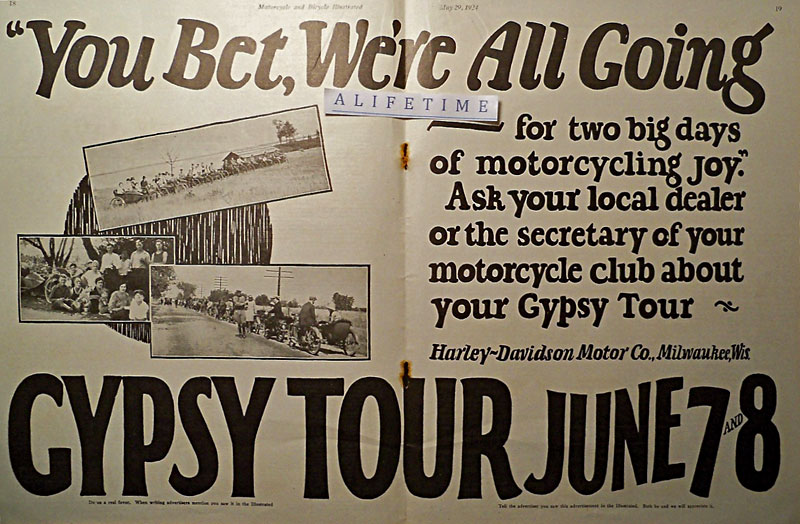History of Laconia Motorcycle Week | 1916 – 1924
1916
(The Gypsies) During parades and rides of the pre-World War 1 period , flags like this (17″x8″ with a 2′ pole) were mounted on the handlebars of early Harleys and Indians. This particular flag came from a 40-mile rally from Greenfield, Indiana to Greensburg, Indiana, on the historic Indiana National Road.
1916 was the very first year of the Laconia rally, but it was an unofficial gathering of about 150 riders.
1917
In 1917, the Federation of American Motorcyclists (FAM) sanctioned its first official Gypsy Tours. A Gypsy Tour was an overnight event, with organized road rides and other activities of interest to motorcycle enthusiasts, where groups of riders would converge on a favorite destination. The term Gypsy was used because the riders would travel long distances, and often sleep in tents around a campfire along the way, much like the Hollywood stereotype. Gypsy Tours were held in various parts of the country, and typically occured on the same weekend every year. The “National” Gypsy Tour referred to the whole series of these events.
The purpose of the Gypsy Tours was to provide a good time for the riders, and favorable publicity for their sport. An article in the June, 1922 of the Harley-Davidson Enthusiast detailed these goals as follows :
First—To promote good fellowship among the riders of all makes of motorcycles and to give them a pleasure tour worth talking about until the time for the next annual tour rolls around.
Second—To give the general public a convincing demonstration of the practical transportation and pleasure possibilities of the motorcycle. The more tours there are and the more riders there are in each tour, the more effective the demonstration will be.
For Laconia, 1917 was considered the “First Annual” Gypsy Tour, even though an informal, unofficial gathering the year before had preceded it. Below, a photo of the 1917 rally. The rally came to be known as the New England Gypsy Tour.
Sunday, May 13, 1917 – Boston Globe Article
PLAN BIG EVENT • Motorcyclists Are to Go on Gypsy Tours • Arrangements Made for Trips on June 17 next
What is expected to be the greatest open event of motorcycling history has been arranged by motorcycle manufacturers and dealers, in cooperation with motorcycle clubs, in all parts of the country, for June 16 and 17. The event will be national in scope and will embody tours starting from every city and town of any importance.
The name Gypsy Day Tours, which has been chosen for the event, is thoroughly descriptive, as the plan is for the riders to strike out from their various starting points and tour to places of interest. It is expected that on the days in question, the country will be crossed and criss-crossed in all directions by companies of motorcyclists participating in this National event.
In organizing the tours the country has been divided into six sections, each section under the general supervision of one of the the principal motorcycle factories. These sections have in turn been divided into smaller sections, each with headquarters in a city or town from where one of the tours will start, and each in charge of a tour manager who is prominent in local motorcycling affairs.
In conducting these tours every effort will be made to arrange them in a manner that will insure general motorcycling pleasure and comfort for the novice as much as for the seasoned rider. The pace throughout will be moderate and the length of the trips will not be extended unreasonably. It is the aim of the tour managers to gain the participation of every motorcyclist in their territory, regardless of whether he is an old or a new rider.
Registration for the tours is already progressing rapidly and marked enthusiasm is being shown by riders in all six sections into which the country has been divided. Considerable friendly rivalry has sprung up as to which section will make the best showing for the event, and this rivalry has been deepened by a similar friendly contest between the tour managers in the different sections, each manager trying to obtain for his district a better representation than can be shown by his brother managers in neighboring cities.
Joe Campbell, who has been appointed tour manager for this district, is therefore anxious to make the tour which will start from here larger and better than those from our neighboring cities and towns. Every local motorcyclist is invited to register for the tour and Mr. Campbell will be glad to give full information to all who will get in touch with him at 15 Harcourt St, or complete information can be had from any motorcycle dealer in Greater Boston.
(Motorcycle Gypsy Tour) Some of the very first “Gypsy Tourists” at Laconia may have been awarded the medal seen below in its gold version.
Silver version of the 1917 medal.
The 1917 medal hung below a plaque engraved with the rider’s name, and was attached with a patriotic, red white and blue ribbon.
The 1918 National Motorcycle Gypsy Tour watch fob award (below) was given by the FAM to those with a “Perfect Score”. The Perfect Score award was given out to the winners of an “endurance run“, which was a long-distance motorcycle course over public roads, typically 300 to 350 miles in length, that was run over two consecutive days, and that featured checkpoints (controls) about every 50 miles. Given the poor road conditions and general unreliability of motorycles at the time, this was clearly not an easy task! “An endurance run is a very complicated affair. The men have to pass certain points at a given time, and not before that time. On the run they are subjected to a hill-climbing test and also to a secret brake test. There is a score of 1000 points, from which various deductions are made. The great honor, of course, is to make a perfect score (1000 points). To achieve this reflects high credit on both the man and machine…What is most needed in a run of this sort is a cool head and plenty of nerve. It was the reckless riders who came to grief—the men who, instead of taking the affair calmly, rushed madly along the course, hoping to gain time for repairs between one control and another, if any were needed.” Riders who arrived ahead of time at a control had committed as much of an offense as finishing behind time and were penalized accordingly.
A “secret” brake test would be conducted by a race official “…secreted in the bushes and with him was a green flag. As a rider would come up to this point, the official would wave the green flag, which was the signal for the rider to down brakes and come to a stop…Quite a few contestants succeeded in fulfilling all of the conditions of this test, although some of them failed because they had but one idea and that was to get to the next checkpoint as soon as possible……after a time some of the country boys got wise to the situation, and in the goodness of their hearts backed down the road a bit and notifed each approaching rider that there was danger ahead in the person of the official and his green flag…the result was that the official had to give it up at this point and try the secret brake test elsewhere..”
Typically, the “survivors”, those who were able to complete the endurance run, received bronze medals; riders with high, but not perfect scores, received silver medals; while the riders achieving perfect scores received gold medals. The rider with not only a perfect score but also the “most consistent riding” and/or “neatest appearance” would receive the coveted diamond award.
Some endurance runs, such as the New York-Chicago, were as long as 1200 miles. With the typically absurdly low speed limits* in effect at the time (20mph country and 10mph city) these runs could last for over a week! Clearly it was not just a race, but a skills challenge, with not only riding skills but maintenance skills involved as well!
Motorcycle manufacturers would tout their machines favorable finishes in these endurance runs as a sign of the high performance and reliability of their products.
In later years, “Merit” or “Tour” awards supplanted the Perfect Score award. The newer awards were given out for some other reason than points in an endurance run – perhaps, some combination of attendance at the individual Gypsy Tours, ridership skills, and appearance. In 1952, the award – a glass ashtray – was simply given away to anyone who registered at the AMA booth at any Gypsy Tour and showed their AMA membership card. As the amount of metal and workmanship in the award declined, from elaborate belt buckles and watch fobs, to simpler, less expensive items like patches and pins, the awards became souvenirs, sold to anyone with the cash.
*Speed limits gradually creeped up over the years. In 1949, Governor Sherman Adams signed a law boosting the maximum speed on NH highways from 45mph to 50mph. This would be considered a snail’s pace on today’s modern highways.
Gold version of the 1918 medal.
The FAM – the Federation of American Motorcyclists
During its 16 years of existence, the FAM achieved many of its objectives: “…to encourage the use of motorcycles and to promote the general interests of motorcycling; to ascertain, defend and protect the rights of motorcyclists; to facilitate touring; to assist in the good roads movement; and to advise and assist in the regulation of motorcycle racing and other competition in which motorcycles engage.”
Here’s a beautiful, ornate FAM watch fob from a July 17-21, 1912 rally in Columbus, Ohio.
Competing tire manufacturers US Tire and Goodyear both had giveaways at the Rally, below.
From the same 1912 rally in Columbus, here’s the earliest motorcycle watch fob known where the word “Tour” or “Tours” is engraved. This fob had “National Tours”. (Apologies for the e-Bay seller’s watermark.) Perhaps this fob was the original example for all the Gypsy Tour watch fobs that were produced in the consecutive years from 1917-1930.
The exact same design of the above fob was used a couple of years later, for a tour in St. Louis, in 1914.
From the same 1914 rally in St. Louis, here’s the earliest motorcycle watch fob known where the words “Perfect Score” are engraved. See above for more information about the Perfect Score award.
1919
An article from the March 13, 1919 issue of the Motorcycle and Bicycle Illustrated magazine detailed the objectives and rules for the Gypsy Tours. The objectives were first, “to provide a good time for the riders, and theirs wives, sisters, and sweet-hearts”; and second, “to create a more favorable public opinion of the motorcycle and motorcycle riders.”
These early Gypsy Tours were quite organized, almost in military fashion, with a “Tour Master” and two aides leading a large group of riders sectioned into “companies” of 10 riders and a captain; and “pathfinders” scouting out and marking the route up ahead. The riders wore visible numbers and were supposed to ride in numerical order, with the sidecars taking up the rear of the company. The riders were also required to carry documentation; these “checking cards” were reviewed each morning by the Tour Master or his aides.
It is interesting to note that in 1919, a good day’s ride was considered to be between 75 and 100 miles; today, that same distance can be covered in a little less than two hours.
A mention of the 1919 event from “Who’s Who and What’s What”, a column in “Ripples around the Lake”, a weekly magazine that was only published during the summer of 1919.
An article from the July 17, 1919 issue of the Motorcycle and Bicycle Illustrated magazine entitled “My Lady’s Gypsy Tour Observations” features a photo of eight women riders of the day, posed on Lakeside Avenue in Weirs Beach. The Lakeside House can be seen in the upper right of the photo. Following is the transcribed article. The article is transcribed from the low resolution photo below, so there may be some minor errors in the transcription.
My Lady’s Gypsy Tour Observations
By “Ione”, Motorcycle and Bicycle Illustrated, July 17, 1919
An abrupt plunge into the sport of motorcycling which speedily converted me to as eager an enthusiast as any of the scores of girls who may be seen on New England roads either in a sidecar, or perched behind the driver, was the recent 150-mile Gypsy tour from Springfield, Mass, to “The Weirs”, N.H. Admittedly an amateur whose qualms regarding both the pleasure and safety of such travel were yet to be overcome, and without any preliminary about-town riding to allay such uncertainties, anticipation of the long trip were slightly ringed with doubts as to its real enjoyment. Once on the road, however, with the speed of the brand new Indian, the “feel” at the power which took me up hill as if the engine itself were enjoying the climb, and the consciousness that “v-twin” couldn’t be beat in good order to any we might have, swept away everything but intense enjoyment of the ride.
Just From the Factory
Our machine was just out of the factory, gorgeous red in color, equipped with all modern improvements, including a little top for the side car which allayed all doubts in my mind of the efficiency of the outfit; regardless of a few pessimistic suggestions from friend husband that the new motor might not run well. He had come home a few nights previous to the date of starting at the Gypsy Tour with the cycle, and a few short hours of riding about town, where the traffic and the dust gave little hint of the joys of the open road, were my last introduction to motorcycle riding.
The long trip came as a revelation. After watching threatening storm clouds at intervals during the night before, we found the weather still threatening at 5 o’clock Sunday morning; but as the rain was not falling we made the start.
“We must elect ourselves honorary members of the Neat Riders Club” Friend Husband had said when the machine arrived, and with that in mind, a neat khaki suit, which in other days had done duty in the less exciting sport of biking, was taken from its box, and quite the newest thing in riding booties was purchased from the store.
The Route of the Tour
Our route lay through Worcester, Fitchburg into Nashua, N.H. and from there to Concord and Laconia, and there to “The Weirs”. Springfield was the most distant point from which any riders undertook the tour, and all but three machines made the start and hummed along at 40 miles an hour to the first rendezvous in Worcester, where the tour actually began, as far as members are concerned. Considerable secret worry on my part lest I should be the only girl in our party, for the rest of the riders from Springfield were men, was greatly relieved upon reaching this first stop to find several women accompanying the drivers. From this point until the hotel was reached, the number of riders swiftly increased, and at Nashua the big contingent from Boston made an appearance.
We plugged along at a slow and steady pace, allowing swift speedsters as felt the necessity to rush along the road with throttles open, go by us at will and were rewarded for forbearance by overtaking these same speedsters at intervals busily engaged in making repairs by the roadside. The ride through the early evening air, through cities, past farm houses, along smooth state roads or ordinary dirt roads, was truly exhilarating, quite different from any other sport which I had ever undertaken. But one objectionable feature entered the trip to “The Weirs”. This was the tar which was thrown up by the wheels while riding along freshly oiled roads.
The good fellowship of all riders was one of the most vivid experiences made upon me. Any rider who passed us or whom we passed, invariably offered a salute, a wave of his hand, or a shout, rarely neglecting some sort of greeting. This was true not only of the members of the tour, but of local pleasure riders in every village and city, who most politely directed us on our way. So fast sped the miles and so swiftly the hours of the ride, that we seemed to be eternally stopping for gas and oil, though I was repeatedly assured that we covered 40 miles to a gallon in our sidecar machine.
Enthusiasm Increased
Aa enthusiasm for the sport increased, I watched the various outfits with interest, and noted that they were as many in variety as the sections of the country from which they came. It was not the variety of machines, for all the standard makes were there in equal numbers, but the getups of the individual outfits which showed how a motorcycle can be made to almost all requirements. A good many were sidecar outfits, like our own; equally many were solo machines, and still others were provided with a seat in back of the driver for a passenger. But such oddities as the outfit by a Quincy, Mass dealer, where a man rode on the right and a girl on the left of the machine proper; in a specially designed seat over which a large umbrella was placed, offered delightful diversions in the ridership of the general type. Our outfit, painted like a checkerboard, made a gay splash on the landscape as it dashed by.
A first view of “The Weirs” was a sight to make one gasp. We were among the late arrivals, owing to some slight difficulties with our machines, and as we drove into view of the lake and the hotel where the tourists were staying, hundreds of motorcyclists were to be seen parking in the roadway before it, while fully 500 men and girls, in as outlandish a set of costumes as I ever hope to see, were striding among them.
My sense of modesty which I had always prided myself was broad, certainly was strained at some of the costumes which girl riders had seen fit to don. Of course, the way was long, and dainty clothing even for sidecar riders was impossible, but as in every other sport, some of the women had seen fit to go to the extreme of manliness. Scores of women who came in sidecars were fittingly arrayed in khaki suits or dark clothing, as nearly dustproof as possible, and many of the girls who rode astride behind the driver had found divided skirts were comfortable.
Modesty is Strained
Fully 50 of the girl riders, however, had put on trousers for the occasion. Not the neat riding costume with petties and long coats, which horseback riders make use of, but out and out army trousers and special leggings, with a sweater for a blouse, and topped by a rakish cap. No doubt these togs were comfortable on the road, but two nights and portions of three days were spent at the “The Weirs”, and such clothing had to be worn without change throughout this time. Imagine girls in trousers and petties upon the dance floor! Yet dancing was the principal diversion of the evening hours. In the dining room, as well, trousers were in evidence. Of course, such an outfit made its appeal to comparatively few, but criticism not only by other women and of the men on the tour was voiced, but guests who were not motorcyclists found in such clothing a point of criticism against the entire sport.
Ready for Home
However, in mid-forenoon, the sun burst forth while the rain was still falling, and in a trice, everyone was packed up and ready to start for home. Except for frequent small showers, the journey back to Springfield was uneventful, and I arrived in town feeling very much a veteran motorcyclist and altogether delighted with our craft and the sport.
The M&ATA – the Motorcycle and Allied Trades Association
Below are the National Motorcycle Gypsy Tour watch fob “Perfect Score” awards which were given by the M&ATA’s Riders Division for the six years from 1919-1924. A complete collection of these medals would consist of three versions for each year: bronze, silver and gold.
Gold version of the 1919 medal. The 1919 medal is perhaps the rarest of all the Gypsy Tour yearly souvenirs.
Here is a combined M&ATA award for the years 1917, 1918 and 1919. It is the only known multi-year Gypsy Tour award.
1923
The silver and gold versions of the 1923 medal.
1924
Silver and gold versions of the 1924 medal.
The AMA – the American Motorcycle Association
On August 1, 1924, the AMA (American Motorcycle Association) was officially established. (For more about the history of the AMA, please click here.) The following year, in 1925, the AMA took over from the M&ATA the sponsorship of the Gypsy Tours, and greatly expanded them, from perhaps a few events to over 200 separate ones. With the exception of the World War II period, the Gypsy Tours were yearly events that continued until the early 1960’s. At that time, even though many of the gatherings that they were based on continued, the term “Gypsy Tour” fell out of favor, and was replaced by the term “Tour and Rally”, as in “New England Tour & Rally”.
In 1991, the term Gypsy Tour was officially revived by the AMA. However, by that time the individual events had all gone their own way in naming themselves. In 1953, or perhaps even earlier, Laconia first called its event ”Motorcycle Week”, and that term has stuck to the current day.
The various Motorcycle organizations, and vendors who came to these events, have been selling souvenirs since the earliest years of the Laconia rally. The souvenirs were marked “Gypsy Tour”, but were not tagged with the Laconia name. These generic souvenirs were sold not only at the Laconia rally, but at all the other Gypsy Tours as well. For a historical look at these generic AMA Gypsy Tour souvenirs, dating from 1925 to the present, please click here.
Souvenirs specifically marked “Laconia” were first sold in 1938, in the form of pennant flags. Pennants were the only form of Laconia souvenir until 1948, when the first pin with the Laconia name could be purchased. As the popularity of Laconia Motorcycle Week expanded, souvenir pennants, pins, buttons, and patches and other items with the Laconia name for sale became a standard feature of the rally. Nowadays, T-shirts are by far the most popular souvenir item for sale to sport the Laconia name.











